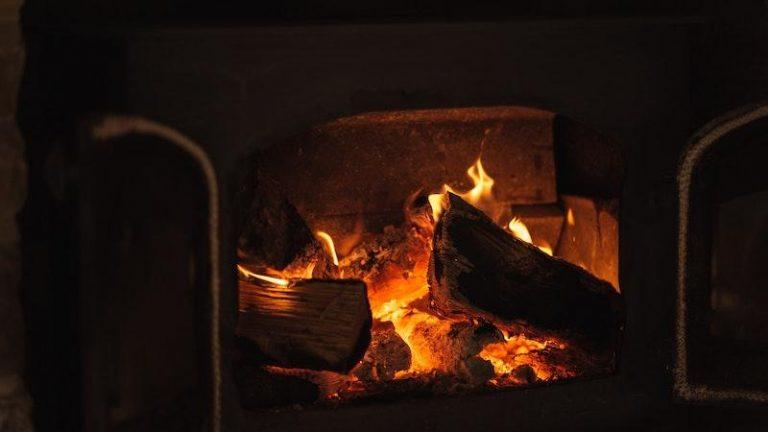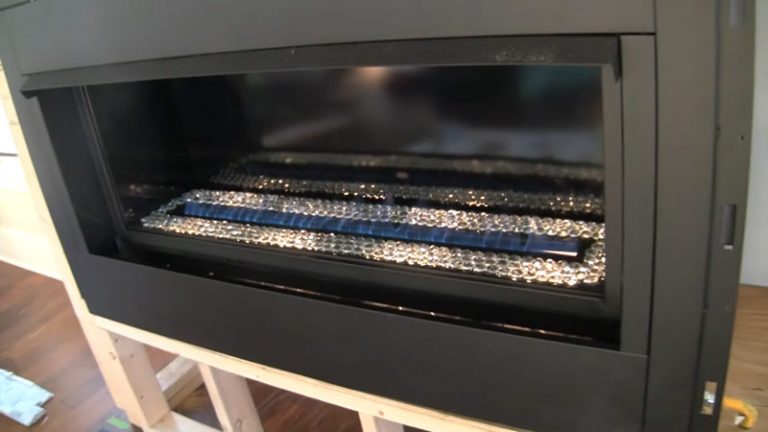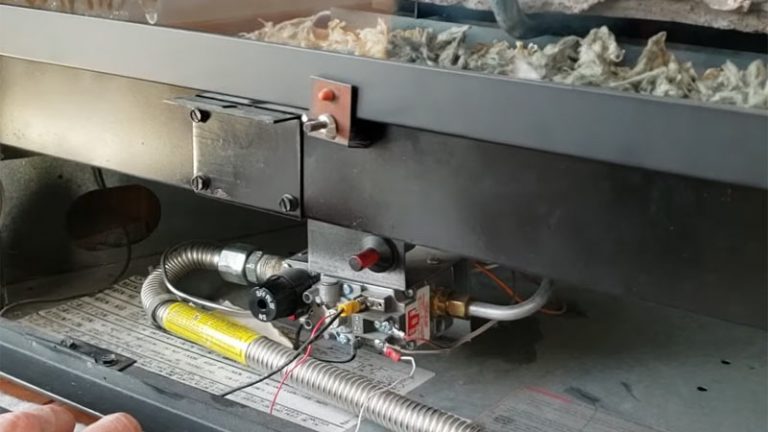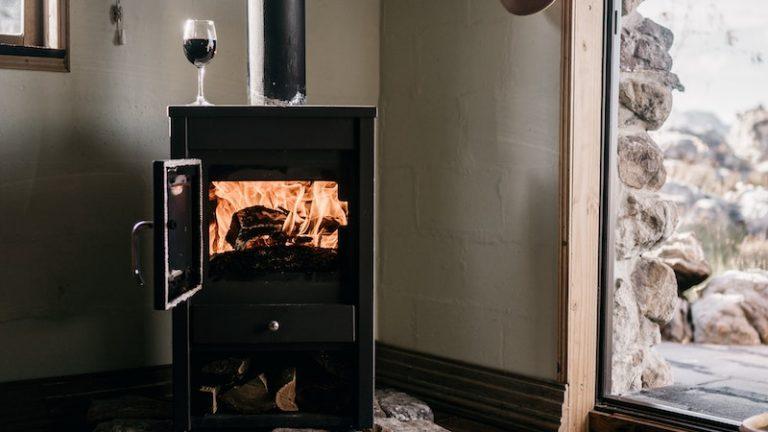Which Is Safer Vented Or Ventless Gas Fireplace
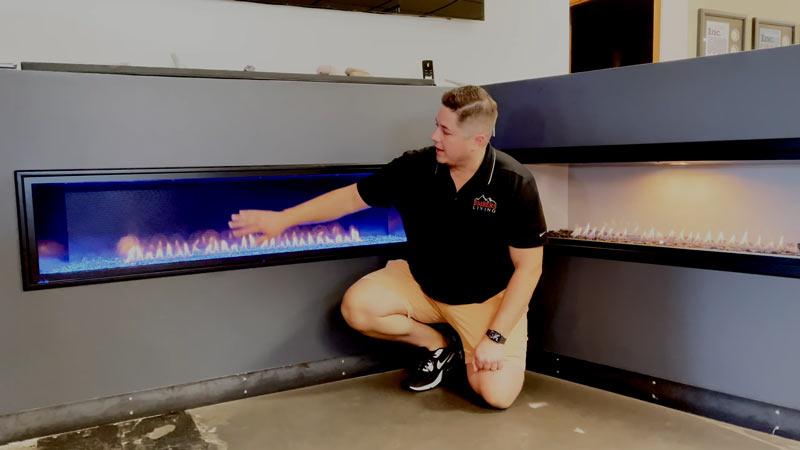
A vented fireplace is safer than a ventless gas fireplace. The fire burns in direct contact with the air. Use a thermostat to control heat loss and make sure your base is level and securely fastened to the ground to avoid dangerous falls.
Keep your fireplace clean and maintain flame height so it doesn’t go out prematurely or cause excessive damage in your home. Make sure you have an adequate insurance policy if something were to happen while using a vented fireplace such as carbon monoxide poisoning from faulty appliances, fires caused by pilot lights, etc.
Finally, always be aware of weather conditions when deciding whether or not to use a vented fireplace – sometimes extreme cold weather can freeze pipes and shut down vents preventing proper combustion.
You'll Learn About
Which Is Safer Vented Or Ventless Gas Fireplace?
Venting your fireplace is safer than using a ventless, as the latter can lead to fireplaces catching on fire. Make sure you have a thermostat to control heat loss and that the base of your fireplace is level and securely fastened to the ground.
Keep your fireplace clean by sweeping or vacuuming off ash and debris regularly, and maintain flame height at around one-third power for best results. Don’t forget about insurance. A Direct Vented Fireplace may be more expensive up front but it could save you money in the long run if something goes wrong with it.
Winter fires are warmest when they’re burning low–keep an eye on flames so they remain manageable
Vented Fireplaces are Better in Terms of Safety
A vented fireplace is better in terms of safety because the gases are released slowly and there’s less potential for a fire to spread quickly. Ventless gas fireplaces heat up more slowly, so you may need to use more fuel which can be costly.
They also tend to produce a lot of smoke, so if you’re sensitive to smell or have asthma, this might not be the best option for you. Vented fireplaces typically require installation by a professional installer whereas ventless units can usually be installed by yourself with some guidance from an expert.
If you need help choosing between a vented and ventless gas fireplace, consult your local home improvement store or search online for reviews before making your purchase.
Direct Venting is Safer Than Chimneys
A ventless gas fireplace is a safer option than a chimney-vented gas fireplace because the fire burns hotter and more efficiently in a direct vent system.
Chimneys can be difficult to clean, which increases your risk of fires. Direct venting also eliminates the need for an external fan to keep your home heated in cold weather, making it a more efficient choice overall.
Ventless systems are less likely to cause carbon monoxide poisoning if they malfunction or get damaged in any way, making them the safest option when choosing a new gas fireplace
Thermostat to Control Heat Loss
A thermostat is a great way to control heat loss through your gas fireplace. By setting the temperature at a comfortable level, you can avoid having to use the fire frequently.
Make sure that your thermostat is compatible with your gas fireplace before purchasing it. If you find that the heat from your fireplace is too strong, adjust the dial on the thermostat accordingly Make sure to clean and check all of your equipment regularly in order to maintain optimal performance
Level and Securely Fastened to the Ground
Make sure the base is level and securely fastened to the ground before starting your project. Ensure that you have a sturdy vent cover for your gas fireplace if you are using a vented or ventless unit.
Choose a fire pit with an adjustable leveling system to ensure accuracy when setting it up on any surface. Use caution when opening the damper, as too much air pressure can cause damage to your unit and surrounding area.
Always use proper safety equipment while installing or using a gas fireplace – including gloves and goggles
Keep Your Fireplace Clean
Ventless gas fireplaces are safer to use because a flame cannot reach combustible materials. Cleaning and maintaining your ventless gas fireplace is simple- just follow these tips: Maintaining the correct flame height will keep your home safe and warm all winter long.
A properly vented gas fireplace can provide beautiful flames year-round without the hassle of cleaning or maintenance.
Which is better vented or ventless gas fireplace?
Generally vented fireplaces are better than ventless fireplaces. Ultimately, the decision depends on your personal preferences and needs.
If you want an open flame that can be seen from far away, a vented gas fireplace may be preferable. On the other hand, if you prefer a more intimate fire experience and don’t mind having some smoke emanating from the unit, a ventless model might be better for you.
Ventless Gas Fireplaces Are More Efficient
A ventless gas fireplace uses less energy than a vented fireplace, so you’ll save money on your gas utility bills. A ventless gas fireplace also burns hotter, which means that it will create the same level of warmth with less use of fuel.
Vented Gas Fireplaces Use More Gas
Vented gas fireplaces use more gas than a ventless one does, so if you’re looking to save money on your heating bill then go for a ventless option instead.
Additionally, using more gasoline can cause environmental problems such as climate change and air pollution.
A Vented Gas Fireplace Uses More Heat
A vented gas fireplace uses more heat to create the same level of warmth as a ventless one does- this means that it may take longer to achieve desired temperatures in a vented unit compared to a ventless model.
How safe are ventless gas fireplaces?
Ventless gas fireplaces can be very dangerous if not installed and used correctly- use caution when installing or using a ventless fireplace. Ventless fires produce high levels of Nitrous Oxide and Carbon Monoxide which can be deadly in large doses – keep your ventless fireplace well-maintained to avoid gas leaks.
Use proper safety precautions when using a ventless fireplace, such as wearing a face mask and gloves; make sure your family is aware of the dangers before using it and always use caution.
Is direct vent or ventless better?
Direct venting is a type of heating and cooling system that uses an outdoor duct to send air into or out of the house. Direct vent systems are usually cheaper than ventless ones, but they have a few disadvantages.
For example, direct vents can be more difficult to install and maintain, and they may not offer as much insulation in cold weather. Ventless systems use indoor coils or fans to circulate air throughout the entire home.
They’re generally more expensive than direct vents, but they tend to be easier to install and keep clean because there’s no need for an outside duct. Direct venting is a better option because it looks more realistic and reduces the risk of emissions.
Direct venting also has the added benefit of being aesthetically pleasing.
Which is warmer vented or ventless fireplace?
There is no right or wrong answer here, it really depends on what you’re looking for. A vented fireplace will allow the heat from the fire to escape through the chimney, while a ventless fireplace has a fan that helps circulate the heat.
Vented Fireplaces Look Better
They also look better because they do not have any openings that could let in cold air. Both types of units are effective at heating up a room, but the ventless unit may be more efficient than the vented one. Prices for each type of unit vary depending on where you purchase them, but both options are generally affordable.
A ventless fireplace is typically warmer than a vented fireplace
A ventless fireplace is typically warmer than a vented fireplace. They also look better because they do not have any openings that could let in cold air. Both types of units are effective at heating up a room, but the ventless unit may be more efficient than the vented one. Prices for each type of unit vary depending on where you purchase them, but both options are generally affordable.
Is a vented gas fireplace safe?
Vented gas fireplaces are a popular choice for homeowners, but there is always the risk of unsafe combustion. The venting system allows hot gases to escape quickly and safely without building up in the fireplace.
However, if the vented chimney or flue is not properly maintained, it can become clogged with soot and debris over time. This can allow heat and flame to build up inside the fireplace, potentially causing serious injury or even death.
If you’re considering installing a vented gas fireplace in your home, make sure you consult with an experienced safety professional first to ensure that it’s safe for you and your family. Venting your gas fireplace can help reduce the number of pollutants that are released into the atmosphere.
This is because vented gas fireplaces allow fumes to escape while allowing smoke and heat to enter and be consumed. Gas fireplaces release carbon monoxide when they are burning correctly. When this gas gets into your home, it can cause serious health problems including coma and even death in some cases.
Chimney safety is very important when it comes to using a gas fireplace. Make sure that you have a properly installed chimney damper and check for any signs of damage or leakage before using your fireplace.
To Recap
If you’re looking for a safer gas fireplace, ventless ones are generally considered to be safer. A ventless gas fireplace doesn’t let flames escape and can cause serious injuries if lit incorrectly.
On the other hand, vented gas fireplaces have special openings in them that allow gases to escape should something go wrong.
Ventless fireplaces, while efficient, release moisture and gases into the room, requiring proper ventilation and regular maintenance to ensure safety.
If you’re deciding between vented and ventless options, consider whether closing the damper when the pilot light is on could improve safety. Additionally, understanding how creosote logs work can provide insights into maintaining traditional fireplaces. For more tips, explore how to light Duraflame logs for alternative heating options.

